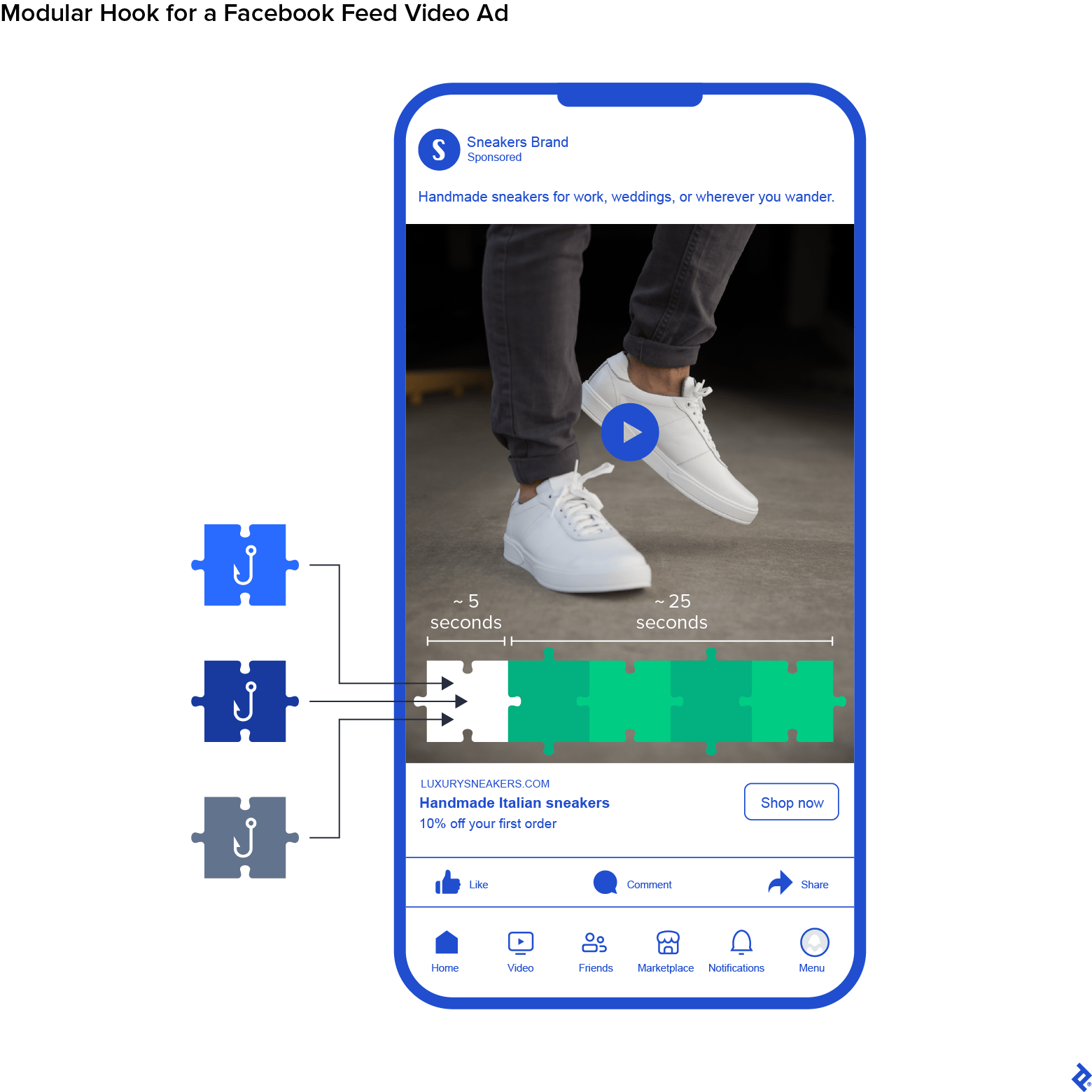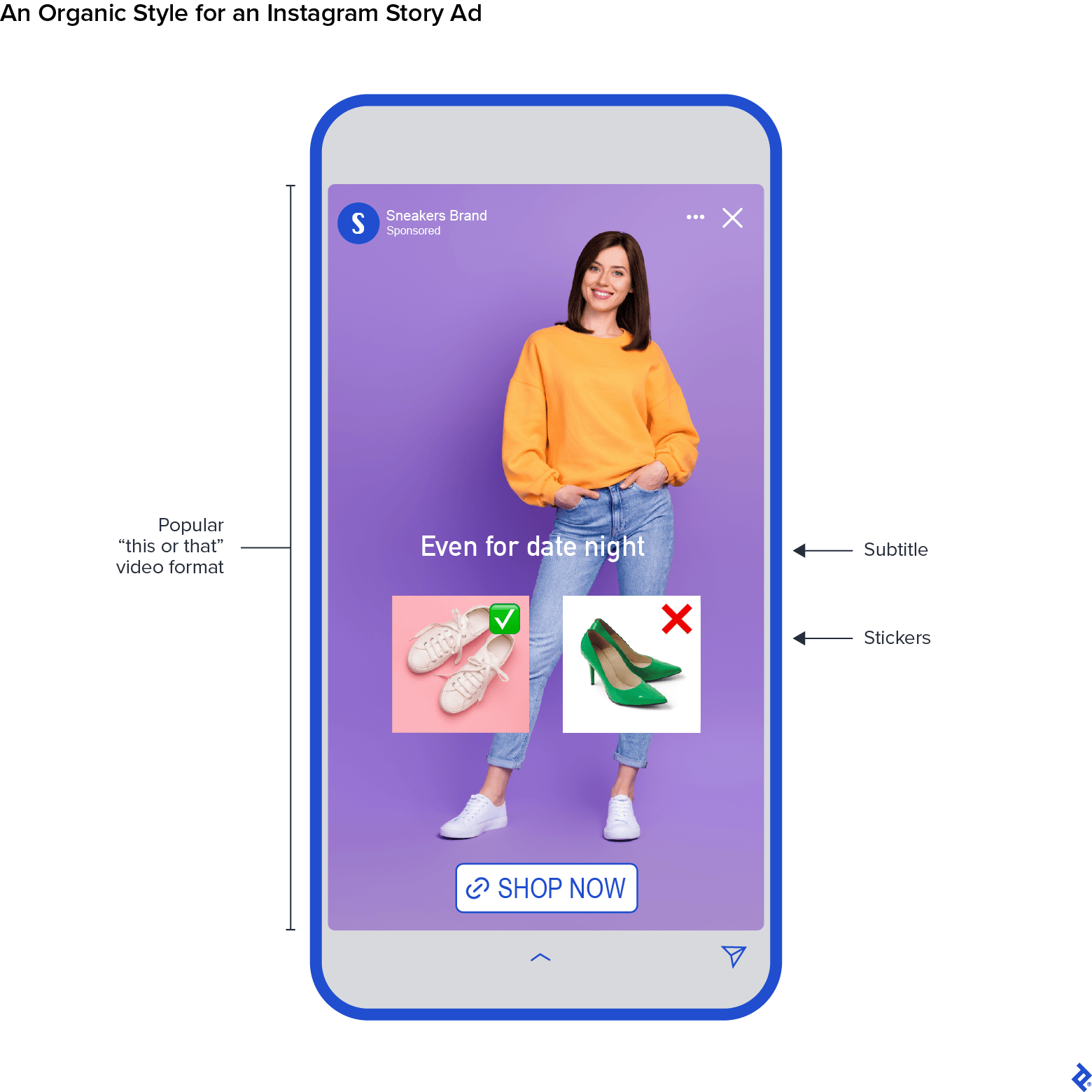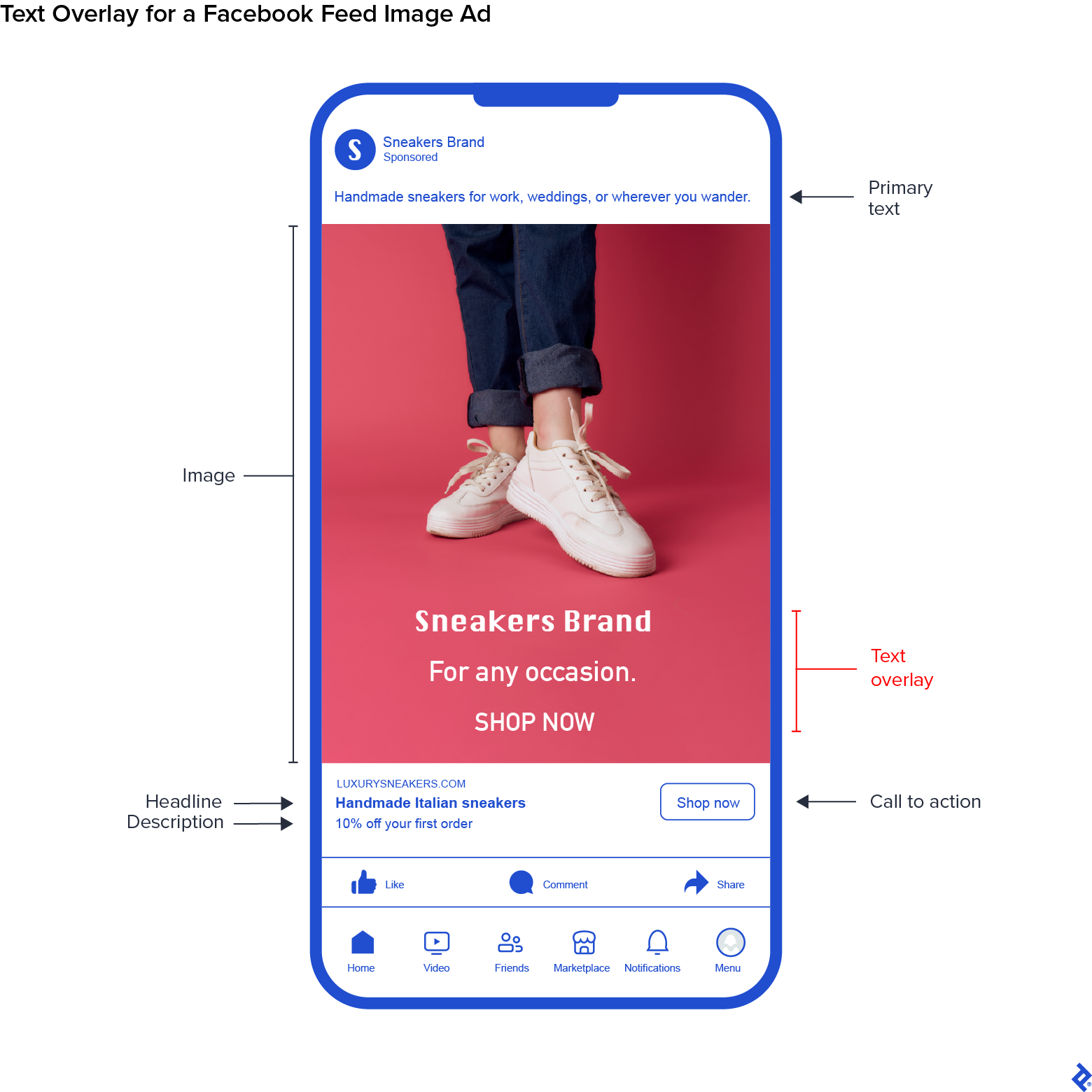5 Strategies for Effective Facebook Ad Creative
When it comes to social media marketing, the hook comes first. Before someone clicks on an ad or post—and certainly before they make a purchase—they must stop scrolling. Audience targeting can help companies ensure their ads reach receptive people’s feeds, but catching their attention is still hard. If a social media platform’s algorithm has determined that someone has a high conversion potential for your company’s product or service, that person will also be seeing the paid ads of your competitors—perhaps lots of them. Your ad creative has to be more thumb-stopping than the rest.
The competition for paid social advertising is expected to grow over the next five years. According to Deloitte and Duke University’s 2023 CMO Survey, businesses currently spend an average of 17% of marketing budgets on social media, and that figure is projected to increase to 26%. In some sectors, such as communications and consumer packaged goods, average social media spending is expected to soar even higher.
Facebook and Instagram are especially important platforms for social media marketing due to their enormous user bases, rich display options, and precise targeting options. Meta Ads Manager makes it easy to run ads for both platforms with minimal customizations, but much of the creative strategy happens before marketing assets are even uploaded to the tool: The best ads always start with a compelling combination of visuals and copy. It’s essential to experiment with different creative techniques to see which strategies produce the most winning results.
As a marketer with almost a decade of experience in growth-oriented digital marketing, I’ve learned what creative assets perform best and drive conversion on Meta platforms. This tactical guide provides five key tips for optimizing Facebook and Instagram ad creative and making the most of your marketing investments.
1. Iterate User-generated Content With Varied Hooks
McKinsey & Company has predicted one of the most important trends for marketing in the 2020s will involve engaging communities of consumers and inspiring advocates to share posts, tag the company, and generally spread awareness about the brand. User-generated content (UGC), such as videos shared on Facebook and Instagram, is central to this community-centered effort, resonating with audiences due to its authenticity and reliability. Yet to gain the most value from UGC videos on these platforms, I work with creators to develop different versions of the first attention-grabbing seconds. I call these alternative versions of the intro “modular hooks,” given how easily they can be subbed in and out.

UGC creators are often enlisted through agencies or direct outreach on social media. When I begin collaborating with a creator on a new video, I ask them to record multiple versions of the hook, using different emotional, humorous, or informational scripts. These hooks can then be combined with the same content modules for the remainder of the ad, allowing you to keep the content fresh and engaging without recording multiple ads from beginning to end. This production style also allows for higher-velocity ad creation since your ad creative process becomes less static and more flexible, ensuring you can optimize the most important seconds of the video based on performance data.
For companies with an extensive library of UGC content, I recommend using a tool like Recharm, which allows for simple editing and iteration of videos. It automatically splits and sorts videos into modules, enabling rapid plug-and-play assembly. Regularly refreshing and testing various types of UGC in your ads keeps your content relevant to your target audience, allowing you to explore different emotional and informational elements of your brand storytelling.
2. Enhance Image Ads With Text Overlays
Adding text overlays to image ads can significantly increase their impact on Facebook and Instagram. Based on A/B testing, I’ve discovered that social media users are increasingly unlikely to stop and engage with a non-video ad when the headline runs only in the standard text fields surrounding the image. This phenomenon is true even when the company has excellent product or lifestyle imagery that should be thumb-stopping in its own right. When a headline is placed directly over the same image and formatted with strong typography, it increases comprehension and makes the user more likely to engage with the ad.
When I began working with a subscription food brand, for instance, the company relied on professional product photography for its non-video ads on Facebook and Instagram. The meals looked enticing in the photos, but the posts were underperforming. So we took the headline from the existing ad copy and placed it directly on the photos. The results were immediate: We saw a significant improvement in the click-through rate (CTR), which also increased the conversion rate and lowered the overall cost per acquisition. I’ve found that it isn’t uncommon for companies to see an initial 40% to 60% increase in CTR when switching to this approach.
Headline overlays must be clear and concise. This will help to ensure that the ad is compelling, relevant, and stands out more in a social feed. The same headline can also run in the standard text fields, although adding the image overlay provides an opportunity to think creatively about the messaging hierarchy. In fact, the overlay can even include multiple components, such as the brand name and a call to action.
3. Use Emoji and Bulleted Lists in Ad Copy
It can be challenging to get social media scrollers to stop and read the primary text of an ad, especially if the text is longer than one sentence. Emoji and bulleted lists can make your Facebook and Instagram ad copy more visually appealing and easier to digest, leading to higher CTR while creating variety in your ad units.
Emoji have the additional benefit of introducing personality and reinforcing brand identity. Of course, this means the emoji should be selected carefully to complement the brand, and for the same reasons, they aren’t necessarily suitable for every business or context. While an e-commerce company might discover that emoji resonate with its audience, a financial services company might determine that a more formal bulleted approach is a more natural fit for its brand identity.
4. Embrace Native and Organic Trends in Paid Ads
Incorporating current social media trends into your paid ads on Facebook and Instagram can increase their resonance with your audience. This strategy involves using formats, styles, or content themes that are popular on social platforms. If companies aren’t aware of what’s happening in the social landscape, their competitors surely will be.
Consider meme culture—a frequent wellspring for shareable marketing content. Brands can incorporate trending memes by creating ads that mimic their formatting and use humor to connect with their audience. For example, when the viral Calvin Klein ad featuring actor Jeremy Allen White swept onto the scene in early 2024, the luggage company Away parodied the ad photography, shooting its popular suitcase wearing Calvin Klein underwear on a New York City rooftop. Away posted the photos on social media almost immediately after the original campaign appeared, catching the wave at the prime moment.
Adding stylized subtitles and sticker overlays typically used in organic posts and UGC is an easy option for making ads look more organic. A tool like Submagic can quickly transform your ad creative with native-looking subtitles, automatically generating and formatting video overlays with the click of a button.

Additionally, there’s an increasing demand for informative content on social media, such as short educational videos or how-to guides. The success of this format transcends industries, working equally well for e-commerce and business-to-business services. An outdoor gear company, for example, could provide a how-to video on cleaning and caring for hiking boots, while a logistics company could offer a video answering common supply chain questions for small businesses. Educational content establishes credibility and trust, helping customers feel confident investing in a product or service. This content type works both as UGC and as company-generated content.
5. Combine Video and Carousel Ad Formats
For e-commerce companies, I’ve discovered a custom ad type for Facebook or Instagram that works exceptionally well: an eye-catching video ad that includes a product carousel along the bottom. I call these “pseudo-gallery video ads.” Instead of leveraging the standard carousel ad unit from Meta—or even the collection ad unit—I replicate the layout of the carousel in a video editor to show a series of products beneath a lifestyle video. The primary video could show a UGC creator putting products into a fanny pack, for example, while describing its remarkable capacity and structure—and the carousel could showcase different colorways of the same product.

The design offers the benefits of a top-performing video ad (Meta promotes videos as providing the highest return on ad spend), while allowing viewers to see additional styles or products, increasing the likelihood of discovery and conversion. When a women’s accessory brand I work with began using this custom ad type, it generated a 50% to 60% increase in CTR and a notable 20% to 30% increase in conversion rate. The company now uses this format for all of its video ads.
The mixed media approach makes the ad stand out on Facebook and Instagram because users aren’t accustomed to seeing this format. The layout also echoes the experience of exploring the different colors or options on a product details page. In some sense, this pseudo-gallery video ad offers the best of two worlds: It presents a range of products for social media users to consider while also showcasing the product in motion.
The Importance of Testing and Scaling Ad Creative
Once a company finds ad creative that hits desired key performance indicators on Facebook and Instagram, it’s time to scale the ad unit for broader use. But don’t increase the daily budget by more than 20% in 24 hours for one ad set or campaign. Instead, scale incrementally. Meta and other ad platforms prefer small, gradual increases in budgets; if you make significant budget changes daily, your ad sets may never exit the learning phase for Meta’s algorithm and will not perform as well.
When scaling successful Facebook and Instagram ads, continue experimenting with new creative approaches. Testing is an ongoing marketing task that deserves at least 10% of your paid media budget. After all, the same hook won’t work for every customer, nor will it resonate with the same customer again and again. The ad creative strategies I’ve described have proven effective across various industries, driving growth, engagement, and conversion. Yet the combination of scaling and ongoing testing demands a strategic blend of targeted marketing, creative finesse, and a data-driven mindset. When done well, these strategies ensure customers can discover the products they desire.



